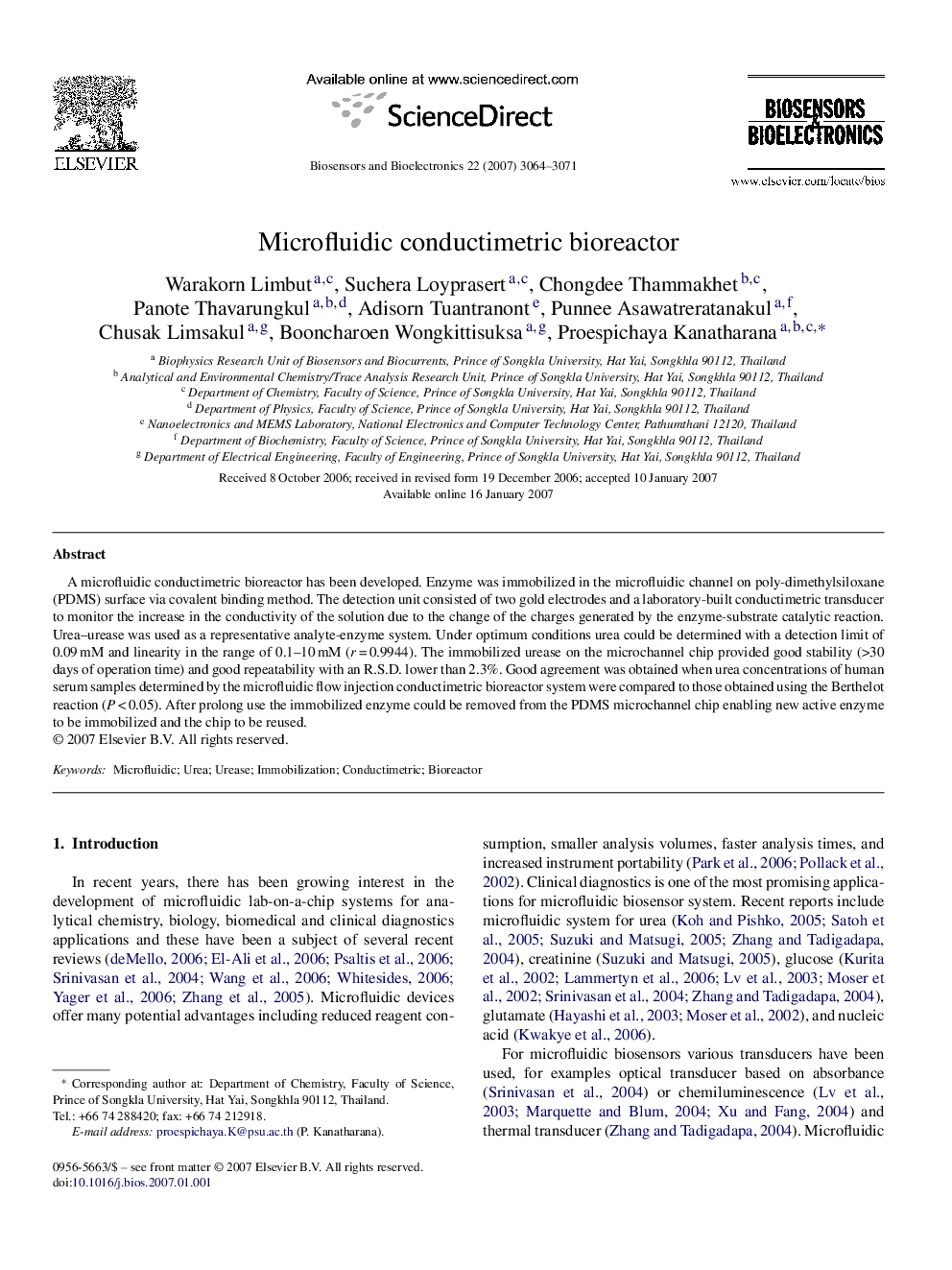| Article ID | Journal | Published Year | Pages | File Type |
|---|---|---|---|---|
| 869434 | Biosensors and Bioelectronics | 2007 | 8 Pages |
A microfluidic conductimetric bioreactor has been developed. Enzyme was immobilized in the microfluidic channel on poly-dimethylsiloxane (PDMS) surface via covalent binding method. The detection unit consisted of two gold electrodes and a laboratory-built conductimetric transducer to monitor the increase in the conductivity of the solution due to the change of the charges generated by the enzyme-substrate catalytic reaction. Urea–urease was used as a representative analyte-enzyme system. Under optimum conditions urea could be determined with a detection limit of 0.09 mM and linearity in the range of 0.1–10 mM (r = 0.9944). The immobilized urease on the microchannel chip provided good stability (>30 days of operation time) and good repeatability with an R.S.D. lower than 2.3%. Good agreement was obtained when urea concentrations of human serum samples determined by the microfluidic flow injection conductimetric bioreactor system were compared to those obtained using the Berthelot reaction (P < 0.05). After prolong use the immobilized enzyme could be removed from the PDMS microchannel chip enabling new active enzyme to be immobilized and the chip to be reused.
